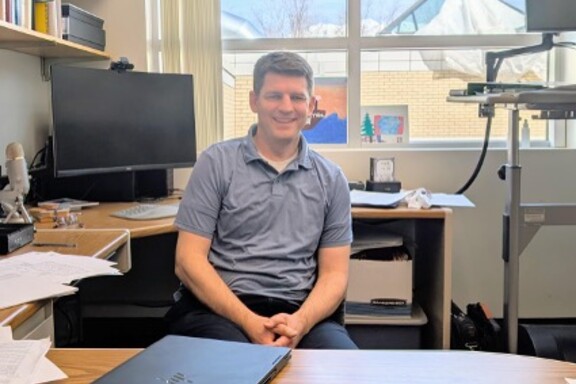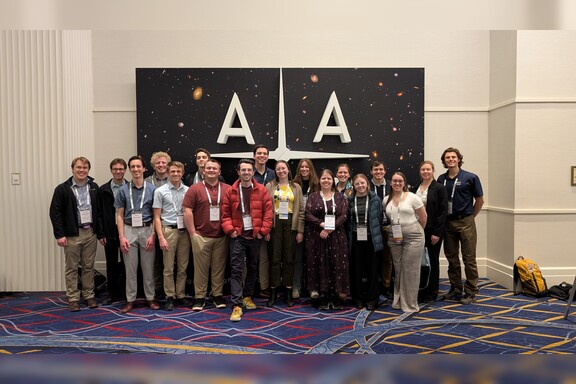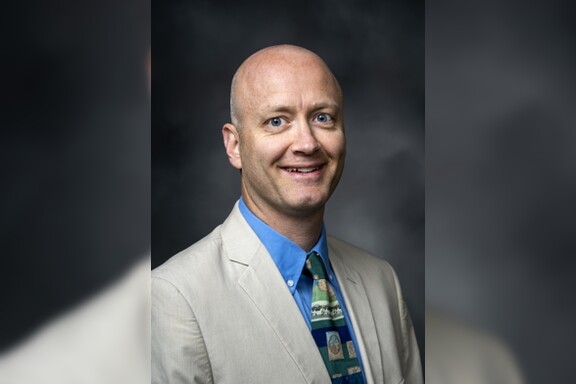 What does a French Synchotron, the FDA, and $120,000 have in common? The answer is Dr. Karine Chesnel, who was just given the Interdisciplinary Research (IDR) Origination Award in 2022 for research in the medical applications of magnetic nanoparticles. She was awarded this alongside co-authors Dr. Roger Harrison and Dr. Bill Pitt from the Chemistry/Biochemistry and Chemical Engineering departments, respectively.
What does a French Synchotron, the FDA, and $120,000 have in common? The answer is Dr. Karine Chesnel, who was just given the Interdisciplinary Research (IDR) Origination Award in 2022 for research in the medical applications of magnetic nanoparticles. She was awarded this alongside co-authors Dr. Roger Harrison and Dr. Bill Pitt from the Chemistry/Biochemistry and Chemical Engineering departments, respectively.
The beginning of their collaboration began years ago. Dr. Chesnel and Dr. Harrison first met almost ten years ago, near the founding of the medical nanoparticle field itself. At this time Dr. Chesnel sought to make the nanoparticles from scratch to better understand their properties. Approximately seven years later, Dr. Chesnel then met Dr. Pitt at BYU’s Annual University Conference networking event. Since that time, they have been applied a couple of times for the IDR award. They finally received the award in 2022 for $60k of funding a year over two years (total $120k). The funds are used to support nine research assistants across the project, four graduate students and five undergraduates. The initial stages of the research are going well.
The Interdisciplinary Research Origination Award, or IDR award, is a specialized grant funded by BYU. Only a few projects are funded each year, and the grant requires certain criteria be met before a project is considered eligible. Each proposal for IDR funding must involve at least 3 professors from BYU and they must come from at least three different departments and at least two different colleges. In addition, the IDR is designed to facilitate interdisciplinary collaborations and obtain the preliminary results needed to apply for external funding in the future. In the initial IDR proposal, Dr. Chesnel and her colleagues included their plans to apply for grants from the National Science Foundation and the National Institute of Health using the results of their IDR funded research.
The main topic of their IDR is to study the magnetic properties of magnetite nanoparticles and potential medical applications. One of the most challenging aspects of working with magnetite nanoparticles is how their magnetization changes over time. To study this effect Dr. Chesnel has two approaches. The first is magnetometry measurements to be able to observe changes in the magnetic moment. Magnetometry can also determine the blocking temperature of the nanoparticles, or the temperature where the magnetization stops changing. The second approach is bringing the nanoparticles to synchrotron beam-lines where Dr. Chesnel uses XRMS to study the magnetic dynamics of the particles. This technique uses polarized x-rays generated by synchrotron radiation that are tuned to the resonant energies of the iron within the magnetite nanoparticles. These x-rays help characterize the orientation of the magnetization. This process enables the determination of the magnetization of the particles at a specific point in time, which, when compared to other times, indicates changes in the magnetization.
Magnetic nanoparticles have several potential uses in the medical field. One proposed use is the transportation of nanoscopic drugs to targeted tissues and cells in the body. Magnetic nanoparticles are capable of transporting genes, drugs, stem cells, proteins, and antibodies.These abilities could be useful in treating a variety of diseases including cancer with the further development of this technology. A key question is how to guide the nanoscopic drugs to the needed location. To answer this question, Dr. Chesnel’s group’s focuses on designing magnetic nanoparticles that lose magnetization in the absence of an external magnetic field. After being carried to the target site by the external magnetic field, the nanoparticles could then disperse to tissues and cells without clumping up. This advance would be a major breakthrough in the application of magnetic nanoparticle technology in the medical field.
Dr. Chesnel is working on many different research projects, but this one is at the forefront of her efforts. The achievement of the university IDR award for Dr. Chesnel and her partners is not only impressive but could have major implications for this area of research. The medical applications of this research have great potential to benefit research in the medical field, and eventually the general public. While the IDR award is the first major grant this group has received, they hope it will be the seed for future grants and continued research. Dr. Chesnel, Dr. Pitt, and Dr. Harrison, along with student researchers, continue to work together to study nanoparticle physics and its medical applications.
By Michael DeFord, Olivia Fenn, Aaron Peatross, Justin Tackett, Corey Hawkins
News and Events














